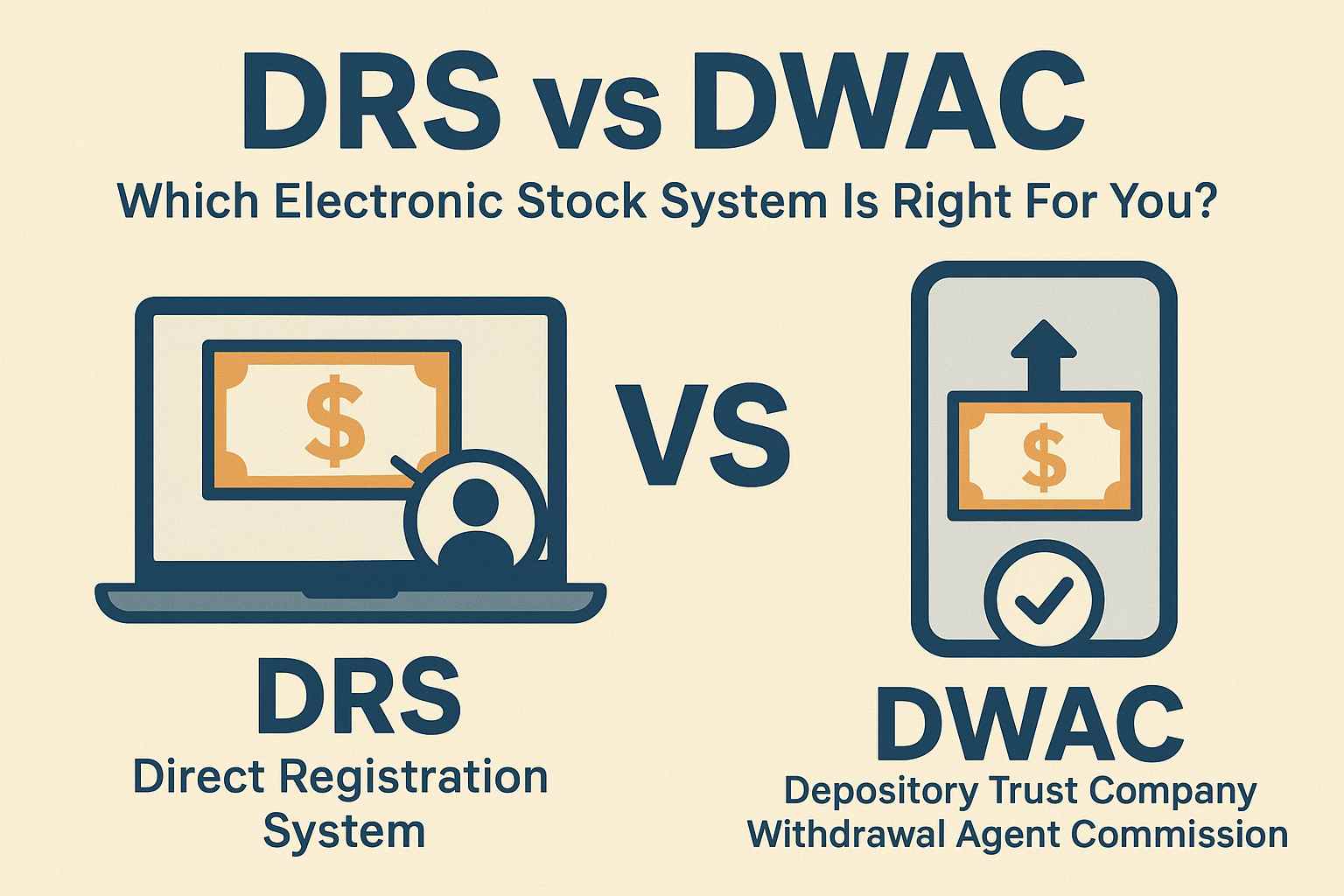Two acronyms usually pop up when shareholders move their shares – DRS and DWAC. These terms often crop up when talking to a broker and a transfer agent.
DRS and DWAC are both electronic systems. Both avoid paper certificates and aim to make share movement faster and safer. They serve different purposes, though. Choosing the wrong one can create delays, surprise fees, or even trade restrictions. It’s why you must know which stock system is right for you. This investor-friendly guide will help you decide.
What is DRS and DWAC Difference?
DRS refers to the Direct Registration System. It lets you hold shares directly in your name at the company’s transfer agent. The shares are not in a brokerage’s “street name.” Instead, they’re recorded in the official books of the issuer. It’s ideal for long-term investors who want direct ownership. The system also reduces broker reliance. It provides access to issuer programs like dividend reinvestment plans.
DWAC is an acronym for Deposit/Withdrawal at Custodian. DWAC stock is an electronic method. It moves shares between a transfer agent and a brokerage account. It’s done through the Depository Trust Company (DTC). Shares deposited via DWAC go into the broker’s street name. This makes them tradable and eligible for margin or options activity.
Registration
- DRS: Shares are in your name at the transfer agent.
- DWAC: Shares end up in the broker’s street name in your brokerage account.
The Main Use Case
- DRS: Hold for a long time, issuer-run plans, and direct ownership.
- DWAC: Quick movement to and from a broker for trading or cash flow.
Quickness
- DRS: A few business days, depending on the companies involved and any forms that need to be filled out.
- DWAC: The same day or the next business day, as long as the instructions are the same.
Fees
- DRS: Some brokers charge a DRS transfer-out fee; transfer agents may have nominal fees.
- DWAC: Most of the time, brokers charge a fee to process DWACs. The cost goes up and down. You should look at the problem from both sides.
Who Can Do What and Who Can’t
- DRS: Not all issuers can use DRS. Some need extra paperwork (e.g., medallion guarantee).
- DWAC: Restricted or legend-bearing shares may not be DWAC-eligible until cleared.
Trading and Margin
- DRS: Investors can’t trade shares at the transfer agent until moved to a broker. There’s no margin.
- DWAC: Shares arrive at the broker ready for trading. Broker rules say whether margin is available.
What are the Hazards of DRS Compared to DWAC?
Both systems simplify how you can move and hold your shares. They also come with their own set of risks. If you know these things ahead of time, you can save time, money, and trouble.
The Risks of DRS
- Trading Delays: You have to give the shares back to a broker before you can sell them. This might take a few days.
- Limited Flexibility: No margin lending or short selling. You also can’t trade straight away when shares are with the transfer agent.
- Transfer Agent Issues: There are delays or problems if the account data doesn’t match.
DWAC Risks
- Fees: A lot of brokers charge DWAC processing fees, which might be more than DRS fees.
- Restrictions on who can apply: Most of the time, you can’t move shares that are restricted or have a legend on them. First, the DWAC has to clear them.
- Street Name Holding: The shares have the broker’s name on them. This could directly limit the rights of shareholders.
Which System Is Best for You?
Choosing between DRS and DWAC depends on the shareholder’s investing style. A passive investor who’s worried about market integrity should choose the DRS system. It offers peace of mind by removing shares from lendable pools. It’s great for retirement accounts or heirloom stocks when you want to be able to access them.
DWAC is better for those who are always trading or dealing with complicated deals. It is better because it is faster and works with other things. DWAC is generally the choice of finance professionals because it works with DTC.
There are hybrid techniques, though. You can use DWAC for initial deposits, then DRS for long-term holding. Fees and availability may differ, so talk to your broker or a financial advisor.
Legacy Stock Transfer Makes It Easier to Move Shares
Not sure if you should use DRS or DWAC to move stocks? At Legacy Stock Transfer, we make the procedure easy. We will show you how to use both platforms. Our team will ensure shares are all registered, transferred, and settled. We’re also ready to help you when you need the security of direct registration. Contact Legacy Stock Transfer today or call 972-612-4120. Let’s move your investments with confidence.

